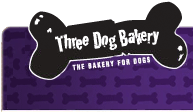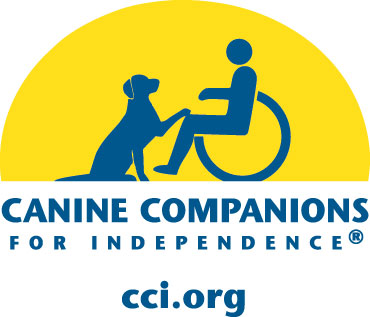 I received the following article from Ashley Porter at VeterinarianTechnician.org. It has some useful information, so I thought I would share it.
I received the following article from Ashley Porter at VeterinarianTechnician.org. It has some useful information, so I thought I would share it.
Finding the right food for your pet can be tough. Recalls and dangerous ingredients are revealed often, making it essential to take the time to read the label to find out what exactly is in your pet’s food. These websites and forums make it easy to decipher the ingredients found in pet food, so read on for tips and ideas to have your pet eating healthy.
Pet Food Forums
There’s nothing like reviews from those who feed their pets themselves. To get the dirt on the best pet foods and which brands or types to avoid depending your pet’s needs, check out these pet food forums.
Dog Food Chat: Reviews straight from dog experts and real pet owners is what you’ll find at this site. From raw food to pet food ingredients and even pet food you can whip up yourself at home.
Pet Food Industry: This site talks about nutrition, safety regulations and everything you need to know about pet food. We love this site because you can sign up for the monthly newsletter that gives you recall notices, so you can be sure your pet food selections are on the up-and-up.
Petfood Connection: Peruse this site for tips on choosing the right pet food for your animal and to learn of any adjustments that can me made to their diets. It also has an interesting section over pet food trends.
The Pet Food List: For all of your recall news, this is the pet food message board to bookmark. Check it weekly because there’s news that’s posted on a regular basis. There’s also a forum over pet foods that the site deems “safe” for your pets, but be sure to do your own research too to ensure your pet’s welfare.
Pets: This Canada-based message board is for pet lovers to chat about your pet’s dietary needs. There’s a sizable thread dedicated to raw foods and home-cooking for pets, plus recipes for homemade dog treats.
PETCO Scoop Blog: This pet blog goes over pet foods of all varieties, including bird, cat and dog food. There are also posts over feeding fish and reptiles, which have specific dietary needs depending on the type.
Truth About Pet Food: This blog gets down and dirty when it comes to exposing the truth about pet food ingredients. Not all companies out there are honest about what’s in their food and buzzwords like “all-natural” are as abused in the pet food industry as they are in other industries, so it’s important to do your homework when choosing pet food.
DogSmithBlog: Learn how to choose food for your pup and how much to feed him or her depending on the type of dog and their size. All of these things are important for a dog’s health, as most with overeat if you let them.
Pet Food Forum: At this message board, members go over the appropriate portions and food for many different species, from birds to dogs. They also discuss getting you know your pet’s likes and dislikes when it comes to their meals.
 Pet Food Sites
Pet Food Sites
If you need more insight on pet food and how to choose the right one for your pet, opt for these pet food sites to give you the breakdown in terms you can understand.
Humane Society: The Human Society takes a serious stand on the regulations of pet food safety and talks about FDA regulations and standards on their site. There are also directions on what to do if you’ve been feeding your pet a brand that gets recalled .
Pet Food Products Safety Alliance: This site is one to bookmark to keep up with any regulation changes and recalls in the pet food industry. It reminds us of essential things to keep in mind when choosing and educating ourselves on pet food, like the fact that the FDA has nothing to do with recalls.
The Pet Food List: This site discusses the proper diet needs of many animals, including birds, cats and even some exotic pets. There is also a lively forum in case you have questions on how much or how often to feed your animal.
Petsit: USA Keep up with this site for all of your recall news, including how to get your money back once a retailer or manufacturer pulls a product from the shelves.
Pet Food Warehouse Blog: This online pet food retailer is smart enough to offer a blog that explains the difference in ingredients and food. It also talks about dog chews and what foods should be avoided for domestic animals (essential knowledge for the newbie pet owner).
Eating Well: This blog is primarily aimed at the health of people, but there’s a hefty section over watching out what your pet eats. It also discusses pet food politics, which involved a melamine scare a few years ago.
Whole Dog News: This blog focuses on raising your dog the natural way. This means raw foods and natural ingredients that will aide their digestion, an integral element for aging pups. It also shows you how to read a nutrition label and judge whether it’s comprised of things you want to put in your dog’s system.
Connected By Pets: Pet lovers unite at this pet message board that posts articles on caring for your pets with the best quality foods and how to care for sick animals. Think of it as a social networking site for those who can’t get enough of their animal companions.
Dog Food Analysis: This site has been active since 2005 and there are loads of dog food reviews to cruise and peruse. They regularly post any ingredient or formula alterations made to some of the more popular dog foods on the market.
Dog Food Chat: At this dog food site, you’ll find reviews and ratings for everything from at-home dog food recipes to mass produced products. There’s also a guide to what leftovers from your own fridge are OK for Fido to consume.
Dog Food Project: This site has loads of information over the latest dog and cat foods being pulled from shelves. We love it because it’s updated often and goes into depth on pet food ingredients and what to stay away from to keep your pet in tip-top shape.
Pet food may seem like a trivial matter, but if your best friend is a pup or cat, you know choosing the right one is essential to their health and well being. Pet food forums and websites will help you choose pet food that does your pet’s body good and gives you peace of mind when making a purchase.
Read More......










































